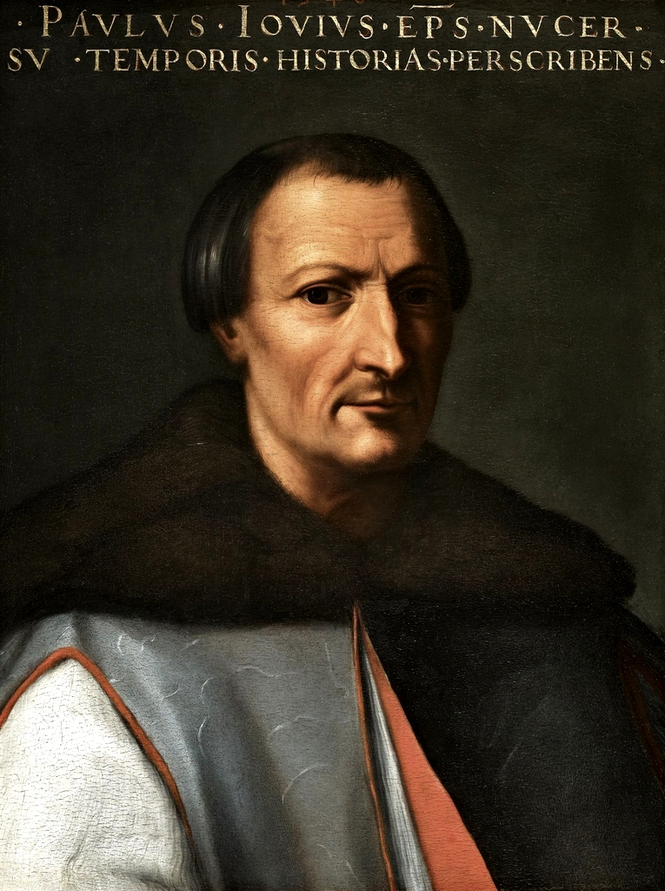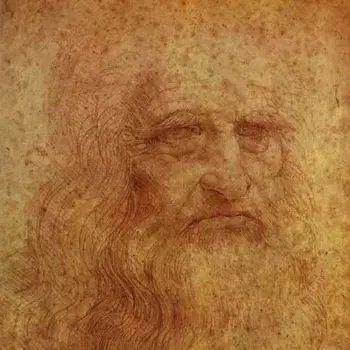Paolo Giovio's biography of Leonardo da Vinci
Paolo Giovio was an Italian historian, biographer, Catholic bishop, and physician. Additionally, he was a passionate art collector. Among his possessions were a portrait of Grand Duke Cosimo I de' Medici and one of the famous Italian admiral Andrea Doria.
He wrote this biography of Leonardo in 1527, eight years after Leonardo's death. His biography of Leonardo is currently the earliest known and possibly the shortest. It remains uncertain whether Paolo Giovio personally knew Leonardo. Given their high social status and shared medical interests, they might have crossed paths.

The life of Leonardo da Vinci, 1527
The original text from 1527
[For better readability, the text will be formatted with paragraphs and headings]
Leonardo, who was born in Vinci, an insignificant village in Tuscany, developed the art of painting to glorious splendor, arguing that painting could be properly practiced only if the artist had first acquired the indispensable knowledge of the sciences. In his opinion, relief modeling, the sculpting of figures on a flat background, should precede practice with pencil and brush. He considered the science of optics fundamental, and on it he based, down to the smallest details, the principles of the distribution of light and shadow.
Anatomical studies
In the anatomy schools of physicians he dissected corpses of criminals, indifferent to the inhumanity and disgust of this study, and concerned only to learn how to represent in his painting the various joints and muscles, their flexion and extension, according to the laws of nature. With extreme accuracy he had all the parts depicted down to the smallest vein and the structure of the bones, with the intention that this work, to which he had devoted so many years, would later be published in the form of engravings as an anatomy for the use of artists.
Leonardo's fickle character
But while he spent his time in researches in fields which are only aids to art, he was able to complete few of his works through caprice and changeable inconstancy; his talent so strived for perfection and was so troublesome to himself that he began many things and then left them unfinished.
The Last Supper
However, his mural in Milan, Christ with His Disciples at the Last Supper, is much admired, and it is said that King Louis had such a desire for it that he eagerly asked all who stood around him looking at the painting with him if it could not be taken down from the wall and brought to France, even though the refectory would have had to be destroyed.
Virgin and Child with Saint Anne
Another painting, depicting the infant Jesus at play with his mother, the Blessed Virgin, and his grandmother, Anne, was acquired by King Francis of France and placed in his house chapel.
Battle of Anghiari
Also in the Florentine City Hall is a painting by Leonardo of the battle and victory of the Florentines over the Pisans, a magnificent work, but one that fell apart prematurely because a poorly prepared lime primer caused the walnut oil paints to flake; but it seems that well-founded grief over the work's unexpected deterioration and loss contributed most to its fame.
Equestrian statue for the Duke of Milan
For Ludovico Sforza, Leonardo made a clay model of a huge horse to be cast in bronze, along with the equestrian figure of Francesco Sforza, the famous military leader and father of Ludovico. The fierce movement of this horse, completely lifelike, is amazing, and no less the sculptor's art and his perfect knowledge of nature.
Leonardo's personality
The charm of Leonardo's nature, the splendor of his affections, the generous kindness of his nature were not inferior to his physical beauty; and equally great was his genius in inventing, in arranging theatrical performances and spectacles; he was considered the supreme judge in all matters of elegance and beauty; he also sang magnificently, to the delight of the whole court, and accompanied himself on the lute.
Leonardo's death
He died in France at the age of 67, to the great sorrow of his friends, especially since, of the numerous pupils who belonged to Leonardo's flourishing workshop, not one was destined for fame.
![[Translate to english:] [Translate to english:]](/fileadmin/_processed_/4/8/csm_giorgio-vasaris-biografie-ueber-leonardo-da-vinci_5d12ee589b.webp.pagespeed.ce.be8yQGCZYc.webp)
![[Translate to english:] [Translate to english:]](/fileadmin/_processed_/4/9/csm_schwarz_cd1373893a.webp.pagespeed.ce.5WLx623R2V.webp)
![[Translate to english:] [Translate to english:]](/fileadmin/_processed_/8/b/csm_leonardo-alle-gemaelde_2dc4b01ef6.webp.pagespeed.ce.ohfmgl8OfF.webp)
